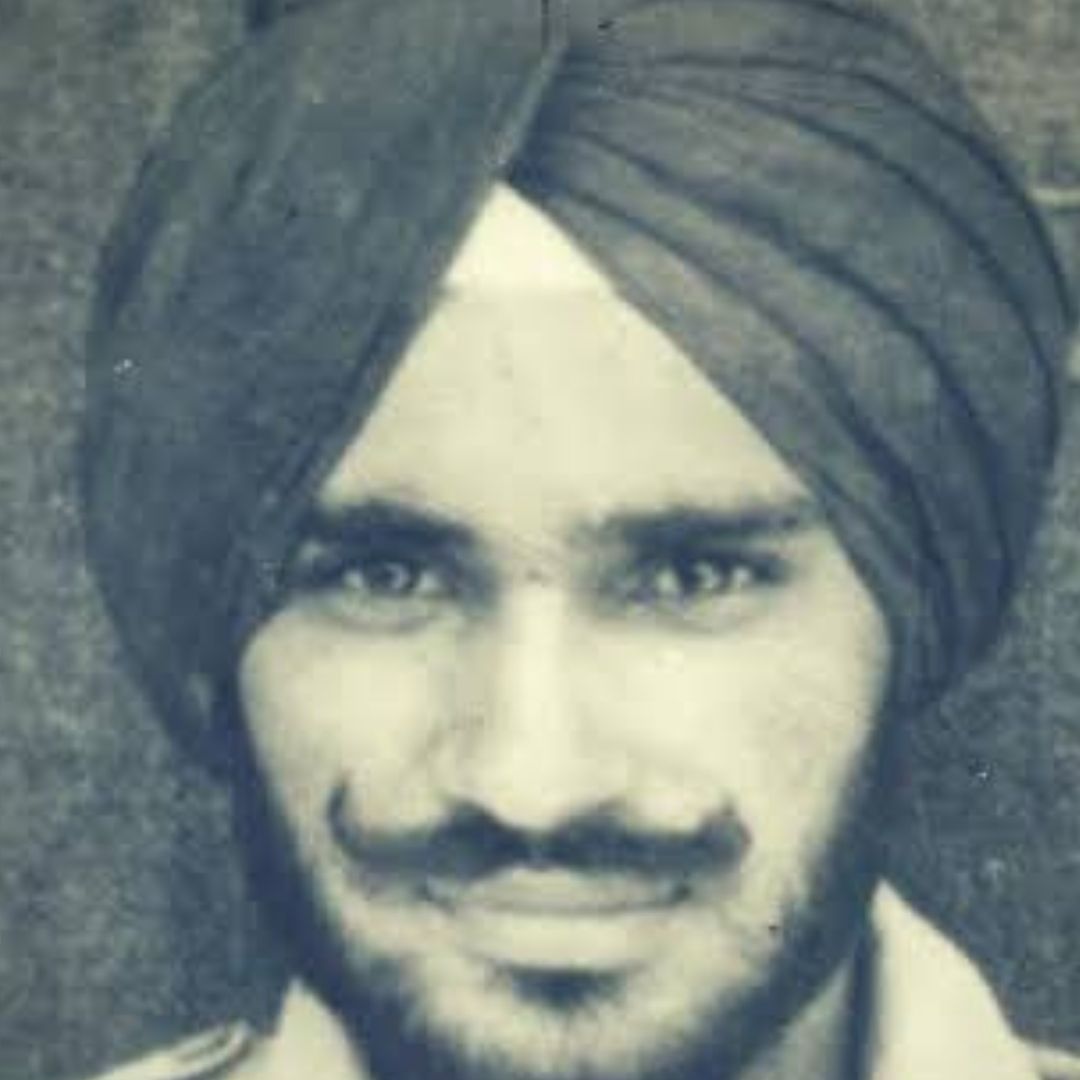
Image Credits: Twitter
Remembering Nirmal Jit Singh Sekhon On Vijay Diwas, The Flying Hero Who Took On 6 Pakistani Fighter Planes Single-Handedly
India, 16 Dec 2021 9:56 AM GMT
Editor : Palak Agrawal |
Palak a journalism graduate believes in simplifying the complicated and writing about the extraordinary lives of ordinary people. She calls herself a " hodophile" or in layman words- a person who loves to travel.
Creatives : Tashafi Nazir
For most people, journalism sounds hectic and chaotic. For her, it's a passion she has been chasing for years. With an extensive media background, Tashafi believes in putting efforts on presenting a simple incident in the most interesting way.
His bravery, flying skill, and determination against all odds earned him the country's highest wartime medal for gallantry, the Param Vir Chakra, the only member of the Indian Air Force to achieve this feat.
India celebrates Vijay Diwas (also called Victory Day) every year on December 16 to commemorate its victory over Pakistan during the 1971 Liberation War, which led to the creation of Bangladesh. This year marks the 50th anniversary of the war.
On December 3, 1971, Pakistan Air Force had carried out pre-emptive aerial strikes on 11 Indian Air Force stations, which led to the commencement of hostilities between the two nations and India's entry into the war for independence in East Pakistan (now Bangladesh) on the side of Bengali nationalist forces.
After 13 days of the war, India achieved a clear upper hand, the Eastern Command of the Pakistan military signed the instrument of surrender on December 16, 1971 in Dhaka, marking the formation of East Pakistan as the new country of Bangladesh. Nearly 90,000 Pakistani soldiers surrendered before the Indian Army— the largest surrender by an Army since World War-II.
However, India too had to pay the cost. Almost 3,900 Indian soldiers were killed and nearly 10,000 others injured, while many were left to suffer from life-long disabilities.
Among these heroes was Nirmal Jit Singh Sekhon, whose exceptional contribution led to the decisive win.
Who Was Nirmal Jit Singh Sekhon?
An officer of the Indian Air Force, he is recognised for his lone defence of Srinagar Air Base against a Pakistan Air Force (PAF) air raid during the Indo-Pakistani War of 1971.
According to available information, Sekhon was born in a Jat Sikh family on July 17, 1945, in the Isewal village of Ludhiana, Punjab Province. He was inducted into the Indian Air Force on June 4, 1967, as a Pilot Officer.
During the 1971 Indo-Pakistani War, he served with IAF's No.18 Squadron, "The Flying Bullets", flying the Folland Gnat fighter aircraft based at Srinagar, Jammu and Kashmir. On December 14, 1971, six Pakistan Air Force F-86 jets of 26 Sqn from PAF base Peshawar attacked the Srinagar airfield.
At that time, Flying Officer Sekhon was on readiness duty. As soon as the first aircraft carried the attack, Sekhon rolled for take-off as No 2 in a two-Gnat formation, with Flt. Lt. Ghumman in the lead, just as the first bombs fell on the runway. Only delayed due to dust kicked up by the preceding Gnat, Sekhon lost no time singling out the first Sabre pair, which re-formed after the bombing run. The Gnat Leader, Flt. Lt. Ghumman lost the visual with his wingman shortly after take-off, remained out of the fight and left Sekhon to handle the chaos all by himself. The latter directly hit one Sabre in the ensuing air battle and set another ablaze. He was seen heading away towards Rajauri, trailing smoke.
After being hit, Sekhon was advised to return to the base by ATC Squadron Leader Virendra Singh Pathania VrC, VM. The officer flew in straight, wings level for some time, then going inverted, plummeting down, probably due to failure of the control system. Sekhon attempted a last-minute ejection, which did not prove successful, as his canopy was seen to fly off.
Later, the wreckage of the Gnat was found in a gorge, near the road coming from Srinagar town to the base. Despite intense search efforts by the Army and Air Force team, his remains were never found due to the mountainous terrain.
Flying Officer Sekhon displayed bravery, flying skill and determination against all odds, which later earned him the country's highest wartime medal for gallantry, the Param Vir Chakra, the only member of the Indian Air Force to achieve this feat.
"The sublime heroism, supreme gallantry, flying skill and determination above and beyond the call of duty displayed by Flying Officer Sekhon in the face of certain death have set new heights in Air Force traditions," the Param Vir Chakra citation read.
The officer is remembered for his gallantry, and his statues have also been placed in multiple cities of Punjab.
In addition, a marine tanker built in 1985 was named Flying Officer Nirmal Jit Singh Sekhon, PVC.
A statue in tribute of him was placed in the courtyard of district court of Ludhiana next to the flag pole. A decommissioned Folland Gnat fighter is part of the memorial and serves as a gate guardian.
Sekhon's statue and a decommissioned Folland Gnat fighter have been erected in the Indian Air Force Museum, Palam.
In 2021, Air Marshal BR Krishna unveiled Sekhon's bust at Government Senior Secondary School, Issewal in Ludhiana, his birthplace.
Also Read: Why Farmers Titled Patel As 'Sardar' After Bardoli Satyagraha?
 All section
All section














